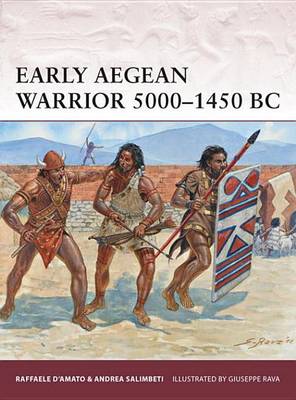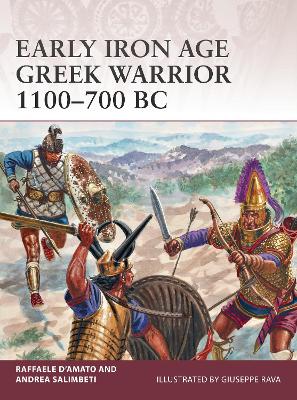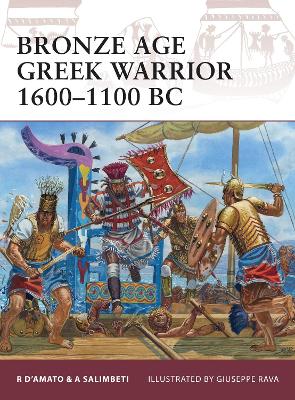Warrior
1 primary work • 3 total works
Book 167
Early Aegean Warrior 5000-1450 BC
by Dr Raffaele D'Amato and Andrea Salimbeti
Published 20 June 2013
The mainland and islands of Greece were extensively settled by peoples moving from Asia Minor in c.5000 BC, while a further wave in c.5000 BC introduced bronze-working to the region. It is form this point on that it is possible to discern a distinct Cycladic or Aegean civilisation, developing at roughly the same time as the Egyptian and Persian civilisations. Further to the south, the Minoan civilisation based on Crete held sway, and this power - along with the Helladic Achaeans to the north gradually swamped the Cycladic civilisation in between. In common with most Bronze Age societies, the culture of the Aegean world was dominated by warfare, with the inhabitants living in organized settlements and small citadels with fortification walls and bulwarks, towers and gates to provide protection against invaders from the sea or internecine conflicts. Using the latest archaeological evidence, this title recreates the world of these peoples through a detailed examination of their material culture.
Early Iron Age Greek Warrior 1100-700 BC
by Raffaele D'Amato and Andrea Salimbeti
Published 25 August 2016
The period from 1200 BC onwards saw vast changes in every aspect of life on both the Greek mainland and islands as monarchies disappeared and were replaced by aristocratic rule and a new form of community developed: the city-state. Alongside these changes a new style of warfare developed which was to be the determining factor in land warfare in Greece until the defeat of the Greek city-state by the might of Macedonia at Chaeronea in 338 BC. This mode of warfare was based on a group of heavily armed infantrymen organized in a phalanx formation - the classic hoplite formation - and remained the system throughout the classical Greek period. This new title details this pivotal period that saw the transition from the Bronze Age warriors of Homer to the origins of the men who fought the Persian and Peloponnesian Wars.
Bronze Age Greek Warrior 1600-1100 BC
by Raffaele D'Amato and Andrea Salimbeti
Published 20 March 2011
More than a century has passed past since German archeologist Heinrich Schliemann discovered the treasures of Bronze Age Mycenae. The richly decorated artefacts of the entombed warriors, whose bodies still lay in their graves, confirmed that Homer's epic The Iliad was based upon true events, and that the Achaeans described in his poems probably did exist. Through a combined study of the mythical tradition, archeological findings and written sources, this fascinating addition to the Warrior series explores the evolution of warfare in the Bronze Age Greek world. Covering weaponry, clothing, helmets and body armour, it provides a richly illustrated guide to the warriors who have shone from the pages of Homer's poem for almost three millennia.


